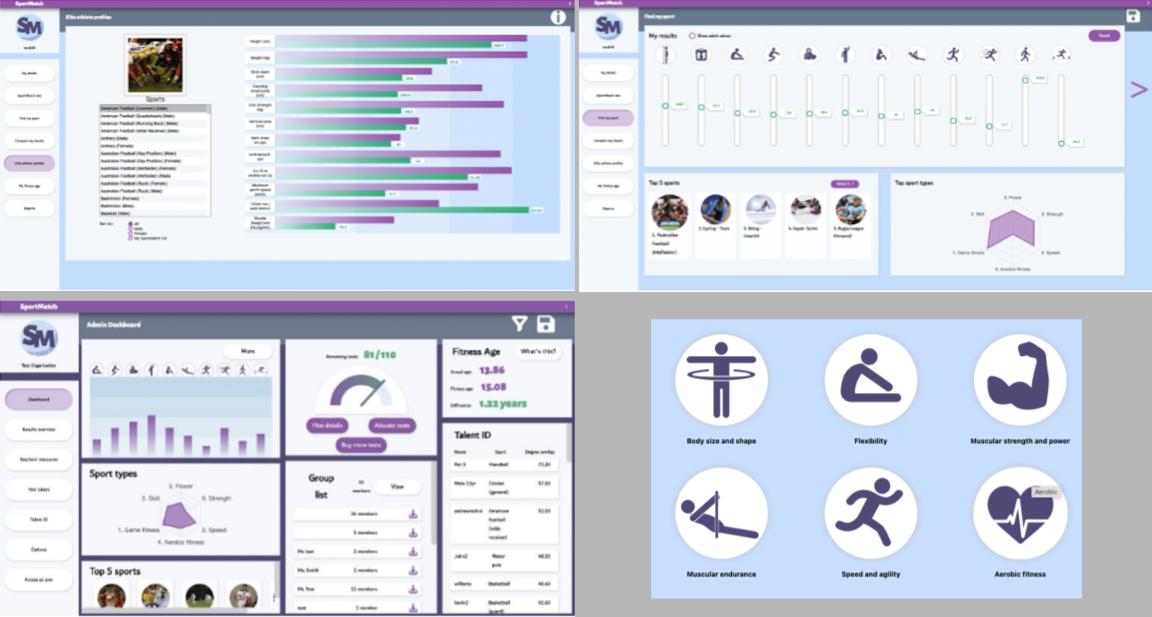Hello and welcome to the last edition of our Sports Technology Blog shoutouts for 2021. I just want to say a huge congratulations to everyone who has made it through 2021. Also, to everyone who has been following this blog for the past year, thank you for your support, and thank you especially to those who have send in your comments, questions and ideas, I really appreciate all of it. Now as we reflect on the year that has passed, all I can think of is: whatever has happened has happened and I am sure there are lots that we can learn from it. We now have a brand new year to look forward to. Or some might say we can start off with a new (or blank) slate. Before we hit the ground running into Twenty Twenty Two (TTT!), I want to give a ‘closing’ shoutout to a bunch of startups who have been getting busy even in the last couple of months of 2021. Without further ado, let’s jump in.
Data Driven Sports Analytics Is Using Data To Give Tennis Coaches The Edge
Data Driven Sports Analytics (DDSA) is a sports analytics startup based in Melbourne. What they primarily do is take all the relevant (and robust) data from an athlete’s training session or competition, run an in-depth analysis (of that data) to break down and study where the athlete’s strengths and weaknesses are, then create performance reports and plans that help coaches and their athletes improve. At the moment, DDSA’s main focus is on helping tennis coaches and their players.

So what kind of data are we talking about? The team at DDSA can work with data from various sources. It could come from Hawkeye system, smart courts (e.g. Zenniz), computer vision apps (e.g. SwingVision or DDSA’s in-house computer vision tracker software) or manually tagged data using software such as Dartfish or CIZR. The DDSA analyst will take those captured shots data, player position and movement data, video data and additional player data and process/analyse them using the DDSA platform. Based on the numbers, the DDSA team will make further analyses and recommendations to the coach and athlete.
Besides all the number crunching and objective data, the DDSA team makes sure to establish a good relationship and understanding of the coaches and athletes they work with because that forms a basis for the individualised recommendations for training and game strategies. They have worked with several ATP/WTA coaches and they only have good things to say about working with DDSA and using data to support their players. A couple of notable players DDSA has worked with include Ons Jabeur (nominated for WTA Most Improved Player of the year 2021) and Aryna Sabalenka (nominated for WTA Player of the year 2021).
So if you are a tennis coach interested in how data can help your players improve in 2022, definitely go look up DDSA. Also, DDSA is looking to grow their team. If you are a coach, reinforced learning (RL) academic or someone with RL experience contact the DDSA team. Lastly, do check out this video where Shane Liyanage (the founder of DDSA) explains the benefits of utilising data:
Metric Is Making Velocity Based Training More Accessible With Their VBT App
Velocity Based Training or VBT in weights training, has for a number of years mainly relied on tracking devices attached to the barbell or installed on the weights rack. From linear encoders (e.g. GymAware), IMUs (e.g. Output Sports, PUSH), laser devices (Flex sensor) and cameras (e.g. Perch). All these devices also rely on an app on the smartphone or tablet for communicating with the devices, and the user interface/dashboards for viewing and storing the training data. With computer vision in smartphones becoming more robust in the last few years, what if we could just use our smartphone camera to track VBT? That was the question that led to the ideation and development of the Metric VBT app.
Metric aims to let users do VBT training without any additional devices. All an athlete needs is their smartphone placed/mounted vertically (portrait) at the side where are training. Set up their barbell and weights (it needs to be standard 450mm circular weight plates), hit record on the app, then start the training set. Once the set is done, stop the recording and the app will run the analysis and work out metrics such as average velocity and range of motion.
At the moment these are the basic features available on their iOS Beta version and it is available for public Beta testing on users with iPhones. The Metric team will be taking in as much feedback as possible from the Beta testers, improving the app and adding more features before launching it officially sometime in 2022. For those who are interested in taking part in the beta testing, you can sign up to their newsletter to receive an invitation to test the Beta version. You can also check out this demo below showing how the Beta version app works:
SportMatch Wants To Make Talent ID More Effective & More Accessible To Athletes
SportMatch is a startup that wants to address some of the current challenges with sports scouting and talent identification (or Talent ID). Those challenges are namely: Talent ID being laboursome, slow, fragmented, subjective and expensive. On top of that, less than 5% of children (in Australia) are properly assessed for potential. So the goal is to make the testing in Talent ID much more efficient and allow more athletes to access such testing and ultimately more talent can be identified.
The solution that SportMatch built is a Digital Talent ID platform that automates the entire Talent ID process. From 20 standard fitness tests and body measures, to predictive analytics that determine what a child athlete (from as young as 8) would perform as an adult, compares it with a database of over 170 elite level sports and predicts their best suited sports. SportMatch has been working with Australian national and states sports institutes and a number of sports teams and leagues to find talent using their current B2B product. Since SportMatch started working with them, they have seen increases of efficiency in the Talent ID process by up to 80% giving coaches and athletes more time to focus on their training and development.
Building on their B2B success, they want to extend their impact further with a B2C (direct to consumer) product. The objective is to let more aspiring athletes have a chance of having an objective measure of their fitness ability, know what (sports) they might excel better in and further develop their abilities. At the same time there will be an opportunity for them to be identified by sports scouts and sponsors on the same platform. We also learned from their Startupbootcamp Sports Tech 2021 demo day pitch, that the B2C product will be a smartphone app with computer vision capabilities for tracking the fitness tests. If things according to plan, the app is expected to launch around March 2022. In the meantime, athletes or organisations who would like to explore how SportMatch works (which has more features than what we covered) should sign up on their website (or portal) and test out the web-based version of the platform. You can also check out their demo day pitch below:
And that is our last sports tech shoutouts for 2021. If you would like more information about any of the above, or maybe you caught on to something and would like to chat about it, feel free to reach out or leave a comment below. If you enjoy our content, please do share on the socials using the links below or subscribe to our blog here: link. As always, thanks for spending time with us and here’s wishing everyone a much more productive 2022! Onwards!








